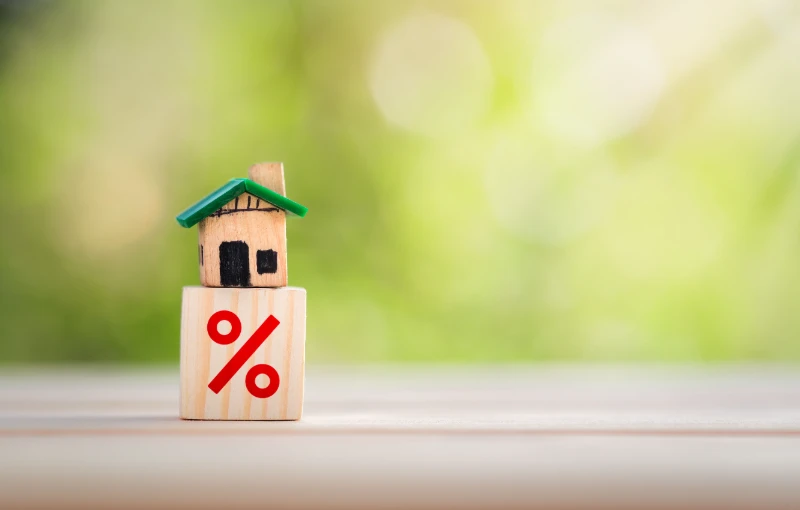Getting approved for a mortgage is an exciting step toward homeownership, but it requires careful…
How To Buy A House In 13 Steps
Most home sales involve the following 13 steps. Let’s take a closer look at what each step involves and what you’ll do along the way.
Step 1: See If You Meet The Requirements To Buy A House
Buying a house is a major commitment. Before you shop for properties and compare mortgage options, you’ll need to make sure you’re ready to be a homeowner. Below, we’ll dive into the factors lenders and homeowners alike should consider.
Income And Employment Status
Your lender will want to see your work history (usually about 2 years) to ensure your income source is stable and reliable. Assemble the right documentation to show steady employment. If you’re on payroll, provide recent pay stubs and W-2s. If you’re self-employed or receiving passive income, you’ll need to submit your tax returns and other documents.
Debt-To-Income Ratio
Debt-to-income ratio (DTI) is another factor mortgage lenders assess when considering your loan application. DTI helps lenders see how much of your monthly income goes to debt payments, so they can evaluate the amount of mortgage debt you can take on.
DTI is calculated by dividing your total monthly debt by your gross monthly income, then multiplying this number by 100 to get a percentage. For example, if your monthly debts total $2,000 and your gross monthly income is $6,000, your DTI is 33%. You’ll need a DTI of 43% or less to qualify for most mortgage options.
Credit Score
Your credit score plays a significant role in what loans and interest rates you qualify for. It gives lenders insight into your history of paying debts on time. Improving your credit score and reducing your debt can pay off big as you prepare to apply for a mortgage. A higher credit score and lower DTI mean better loan options with lower interest rates.
Down Payment
Most homeowners need some cash on hand for a down payment. The amount you’ll need depends on your loan type and how much you borrow. You can buy a home with as little as 3% down, although putting down more has benefits.
Closing Costs
You’ll also need to pay closing costs before moving into your new home. Closing costs are fees that go to your lender and other third parties in exchange for creating your loan. It’s a good idea to prepare to pay 3% – 6% of your loan amount in closing costs.
Willingness To Live In One Place
A mortgage can be a 30-year commitment. Although you don’t need to live in your home for the entire mortgage term, it’s still a big decision. Decide whether you want to live in the same area for at least a few years. Consider your career goals and family obligations.
Timing
Deciding whether it’s a good time to buy a house depends on personal factors (financial readiness, lifestyle preferences) and market conditions (economic health, current mortgage rates). Ultimately, the right time to buy depends on your unique situation.
Step 2: Calculate How Much You Can Spend On A House
Once you decide you’re ready to buy a home, it’s time to set a budget. After reviewing your current debts and income and calculating your DTI, consider how much you can reasonably afford to spend each month on a mortgage. Factor in additional costs such as property taxes and homeowners insurance when determining your budget.
Step 3: Save For A Down Payment And Closing Costs
You can save for your home purchase through investments and savings accounts. If you have relatives willing to contribute, you may be able to use gift money toward your down payment (provide your lender with a gift letter if needed).
Down Payment Requirements
Your down payment is a large, one-time payment toward a home purchase. Many believe they need a 20% down payment, but this isn’t true. Buyers who can’t afford 20% have several options:
| Loan Type | Minimum Down Payment Requirement |
| Conventional loan | 3% |
| FHA loan | 3.5% |
| VA loan | 0% |
| USDA loan | 0% |
Providing a down payment greater than the minimum required offers advantages such as more mortgage options, smaller monthly payments, and lower interest rates. If you put at least 20% down on a conventional loan, you won’t need to pay for private mortgage insurance (PMI). Many states offer down payment assistance programs to qualified buyers.
Closing Costs
Prepare to pay 3% – 6% of the loan amount in closing costs. These fees cover appraisal fees, title insurance, and more. Your lender will give you a Closing Disclosure before closing, specifying the closing costs you’ll need to pay.
Step 4: Decide What Type Of Mortgage Is Right For You
Before applying for a mortgage, decide on the best loan type for you:
- Conventional loan: Popular mortgages not backed by the federal government. Most conventional loans are conforming, meaning they adhere to limits set by the Federal Housing Finance Agency (FHFA).
- FHA loan: Insured by the Federal Housing Administration, FHA loans have less strict credit score requirements.
- VA loan: Insured by the U.S. Department of Veterans Affairs, these loans are available to qualifying service members and veterans. No down payment is required.
- USDA loan: These government-backed loans help people buy homes in rural areas with no down payment required. The home must be in a USDA-eligible area, and income eligibility rules apply.
Step 5: Get Preapproved For A Mortgage
When you’re ready to start house hunting or if you’ve found a home you want to buy, get preapproved for a mortgage. Your lender will evaluate your credit, assets, and income, and provide a preapproval letter stating how much you’re approved for. This helps you and your real estate agent find homes within your budget.
Step 6: Find The Right Real Estate Agent For You
Your real estate agent will represent your interests in the home purchase, find homes that meet your criteria, arrange showings, help you write offers, and negotiate on your behalf. Usually, the seller pays the buyer’s agent’s commission.
Finding A Real Estate Agent
Ask family and friends for recommendations. Direct referrals provide unbiased information about agents in your area.
Step 7: Begin House Hunting
Your real estate agent will help you search for homes within your budget. List your top priorities (e.g., price, square footage, home condition, local school district ranking) and show your agent. Searching for the perfect home may take time, so don’t get discouraged.
Step 8: Make An Offer On A House
When you decide to make an offer, your agent will write the offer letter, including your name, current address, and the price you’re willing to pay. Most offers include an earnest money deposit (typically 1% – 3% of the purchase price), which shows the seller you’re serious about purchasing. If the seller accepts, you can move to the next step.
Step 9: Get A Home Inspection
A home inspection is not usually required to get a loan, but it’s a good idea. An inspector will check the home’s systems and provide a list of any problems. Review the inspection report carefully and negotiate repairs or credits with the seller if needed.
Step 10: Get A Home Appraisal
An appraisal provides the current value of the property you want to buy. Lenders require appraisals to ensure they aren’t lending more than the home’s worth. If the appraised value is lower than your offer, consider options such as increasing your down payment or renegotiating your offer.
Step 11: Ask For Repairs Or Credits
After reviewing your appraisal and inspection results, you might want to ask the seller to address certain issues. You can request a discounted purchase price, credits to cover some closing costs, or repairs before closing.
Step 12: Do A Final Walk-through
Before closing, do a final walk-through to ensure the seller has left everything as it should be and that the requested repairs are complete. Check for any remaining issues and confirm that the home’s systems are in working order.
Step 13: Close On Your New Home
Three business days before closing, your lender will provide a Closing Disclosure, which details your loan and the closing costs you need to pay. Review it carefully and bring it to your closing meeting along with your ID and proof of funds. Once you sign the necessary documents and pay your closing costs, you’re officially a homeowner.
Conclusion
Buying a house is a significant commitment, but following these 13 steps can help simplify the process. From assessing your financial readiness to closing on your new home, each step brings you closer to achieving your goal of homeownership.
If you’re ready to start the home-buying process, contact one of our mortgage professionals today for personalized guidance and support.




